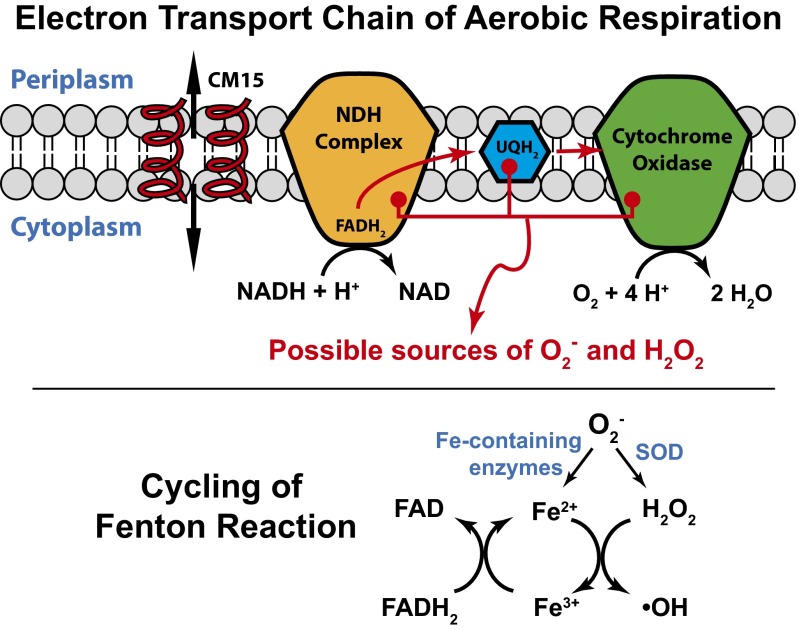Fig. 5.
(Top) Schematic of the aerobic respiratory electron transport chain in E. coli. Red arrows depict flow of electrons; black arrows depict chemical reactions. The NDH complex transfers electrons from NADH to ubiquinone (UQ) to form UQH2. UQH2 carries electrons to the terminal cytochrome oxidase-bo3, which converts O2 to H2O in a four-electron reduction process. Helices depict CM15, which permeabilizes the cytoplasmic membrane seconds before the onset of oxidative stress. We suggest that CM15 induces premature release of O2– from cytochrome oxidase-bo3. The data argue against a mechanism of enhanced autoxidation of the reduced flavin cofactor within NDH or of UQH2. (Bottom) A burst of O2– enhances free Fe2+ by attacking Fe-containing enzymes and enhances H2O2 by the action of superoxide dismutase. This leads to cycling of the Fenton reaction, resulting in enhanced autofluorescence from oxidized flavin species (FAD) and further oxidation of CellROX Green.

